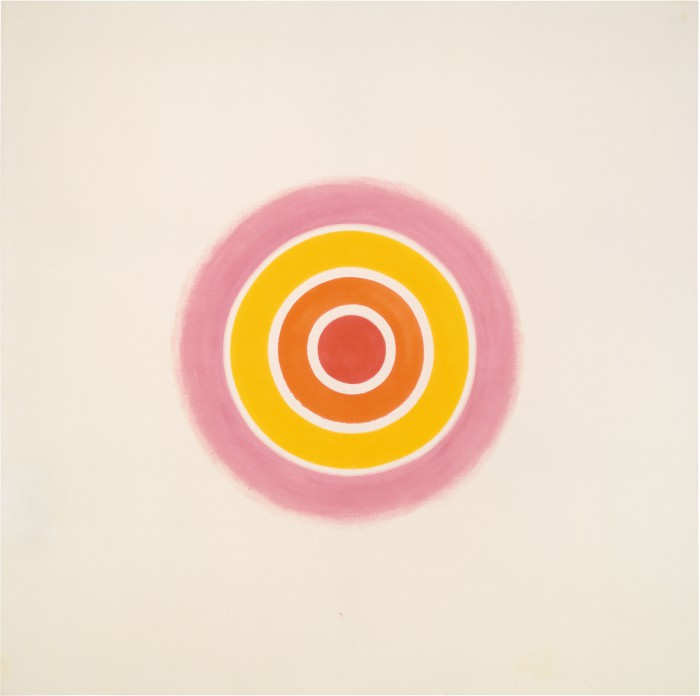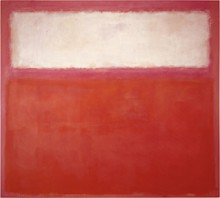Kenneth Noland
Rose 1961

Art © Estate of Kenneth Noland/Licensed by VAGA, New York, NY. Reproduction of this image, including downloading, is prohibited.
Beginning in the late 1950s, Kenneth Noland and the color field painters turned away from the expressive brushwork of action painting to focus primarily on color as a phenomenon. Noland chose diagonal bands, chevrons, stripes, and targets as neutral vehicles for color. Using thinned plastic based pigments, he stained unprimed canvas with translucent washes. Noland’s targets hover as free-floating rings on ambiguous grounds. In Rose, strips of raw canvas separate concentric bands of orange, yellow, and pink. The hot inner circles, their edges hard and sharply defined, push out from the canvas, while the outer ring of vaporous pink blurs softly into the ground.







